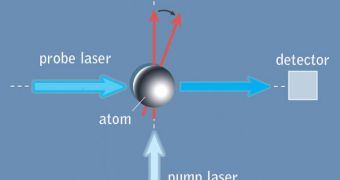A group of physicists from the United States and Russia managed a breakthrough in the field of magnetic field research, when they were capable of maintaining the same spin polarization in a magnetometer at room temperature for more than 60 seconds.
This achievement represents an improvement two orders of magnitude larger than any past records, the investigators say.
A magnetometer is a device capable of measuring magnetic fields. The most basic example is a compass, which analyzes the Earth's magnetic field and points at the magnetic North.
Conversely, am alkali-vapor magnetometer is an extremely complex and sensitive device, which is capable of detecting buried objects, for example. The device has numerous applications in science.
Using such a device, experts from the St. Petersburg-based Vavilov State Optical Institute, and the US Department of Energy's (DOE) Lawrence Berkeley National Laboratory (Berkeley Lab) managed to reach their impressive result.
One of the things that makes their work that much more praise-worthy is they fact that, unlike compasses, complex magnetometers use light and atoms to conduct sensitive measurements.
This means that they are a lot more difficult to handle, and that improving their performances requires tweaks and innovations in other fields of physics as well.
“The fundamental sensitivity of the measurement depends on a number of variables,” explains scientist Dmitry Budker, a member of the research team.
“These include the number of atoms in the sample and, most important, the spin relaxation time of the polarized atoms,” adds the scientist, who is also a professor of physics at the University of California in Berkeley (UCB).
He also holds an appointment at the Berkeley Lab Nuclear Science Division. The expert explains that alkali-vapor magnetometers polarize potassium, rubidium, or cesium atoms, by using a circularly-polarized “pump” laser beam.
“We have demonstrated two orders of magnitude improvement over the best paraffin coatings, and at room temperature – but at a relatively low magnetic field,” Budker goes on to explain.
“The next challenge is to use this technique in stronger magnetic fields – as strong as Earth’s magnetic field, for example, where many of the practical applications are,” he concludes.
Details of the recent achievement are published in the August 13 issue of the top-rated scientific journal Physical Review Letters.

 14 DAY TRIAL //
14 DAY TRIAL //